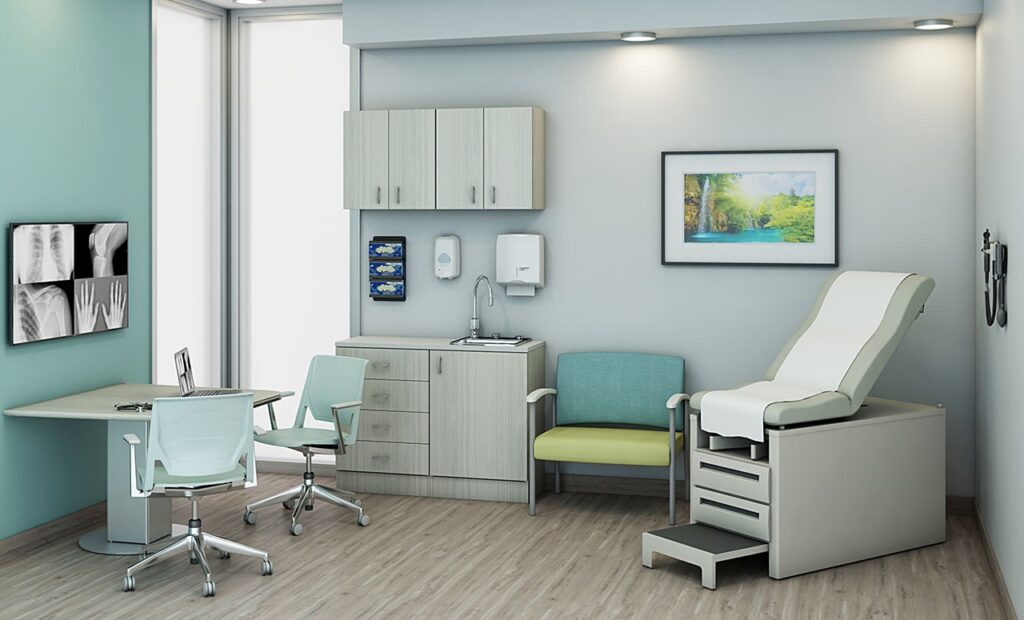Designing and Planning Spaces for a Wider Horizon of Change
In a late 2020 Haworth Connect, Rachel Druckenmiller explained, and I agree, humans are resilient beings who have the capacity to learn and grow from change. Buildings, however, are a different story. During the COVID-19 pandemic, it became clear that traditional buildings and structures often lack the flexibility and adaptability needed to successfully support crisis-related fluctuations. To bring healthcare construction into a new realm, spaces are being designed and planned for a wider horizon of change.
The Role of Health Facilities
The true role of a health system within the community in which it serves has expanded to support the local population more holistically, with resources for behavioral health, nutritional, and social service plans in addition to routine and crisis care. There are many individual roles within a healthcare facility—doctors, nurses, administration, custodians, patients, and caregivers—and sound planning and strategy are fundamental in supporting everyone.
Flexibility to Address Crisis or Change
Currently, architects and planners are grappling with how to create healthcare campuses and building structures with true flexibility. Structures must have the ability to react quickly and efficiently in the face of extreme weather events like hurricanes and tornados, as well as global illnesses or pandemics, like SARS, Ebola, or COVID-19. Relatedly, interior construction is being challenged to offer a wider horizon of change—creating spaces that easily adapt to changing environmental and health-related factors. For the construction of both the structure and the interior, the future of healthcare design is in flexibility.
Designing for the Future
“The pandemic has emphasized how important it is to be ready for anything,” says Abbie Clary, AIA, FACHA, LEED AP, in a MBH Architects article. Healthcare facilities are best built with future proofing in mind. This means forecasting scenarios for a variety of events or outcomes that may occur in the short or long term, then putting in place the infrastructure and space flexibility that can help the facility better respond to said scenarios.
The speed with which a healthcare facility can react is part of its general adaptability. Medical planners and engineers are designing for the changing occupancy of patients and even for screening or triage to be set up in public spaces. With flexibility, services can quickly shift to outpatient—with urgent care locations that are close, but not on, the main hospital campus.
Technology, a major factor in designing healthcare spaces for the future, enables providers to engage with patients in remote locations across a network of care—visiting a patient at home through telemedicine and greatly enhancing service effectiveness.
Reconfigurable Work and Care Environments
Prefabrication, modular solutions, and multidisciplinary contracts address the complex needs of delivering a building that truly enables adaptability. Moveable walls, vacuum plumbing, and flexible gas connections are all innovations enabling positive change in outpatient and inpatient healthcare facilities—along with the ability to provide a continuously supportive work environment for caregivers. Change occurs hourly in healthcare. Shift changes, workstations, patient needs, and work tools are becoming reconfigurable and adaptable to meet real-time needs.
Quick Construction, Close to Patients
Interior construction and furniture standards—having performance, brand quality, and repeatability designed into the solutions—mean that new healthcare spaces developed in locations closer to patients are more efficiently constructed. Retail and commercial office space can easily be repurposed for outpatient services and tailored to a particular population’s changing needs. Former healthcare deserts—like remote rural areas and underserved urban locations—create the opportunity for pop-up care that can expand a health system’s reach.
The healthcare industry has grown and adapted tremendously over the last decade. With a greater understanding of design aspects focused on patient comfort and respite spaces for staff, as well as the influx of new technologies for efficiency and treatment, healthcare facilities today look and feel much different.
Article published by Rod Vickroy on Haworth.com. Click to explore more healthcare environments and solutions.
